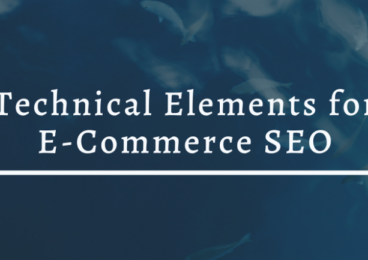 Reading Time: 6 minutes
Reading Time: 6 minutesAccording to Statista, 75% of businesses report a higher ROI from direct marketing campaigns than other mass media advertising. This is because unlike traditional marketing, which focuses on building brand awareness over time—direct response marketing prioritizes getting “fast responses” and quick results. As a result, it also delivers ROI quickly.
But how can you apply it to create persuasive ads and marketing collateral that gets results? Keep reading to find out.
What Is Direct Response Marketing?
Direct response marketing is a term for marketing strategies and methodologies that focus on capturing the attention of your target audience and making them act in a desirable way immediately, typically acquiring a customer or generating a new lead.
Direct Response Advertising
Direct response advertising is a subset of direct response marketing. It means applying direct response techniques to make ads more effective in getting customers to purchase now.
Unlike “branding style” advertising which builds a customer’s familiarity with a brand over time, direct response ads are highly targeted to deliver more sales. They use principles of marketing psychology to create irresistible offers that demand an action to be taken right away. As such, the ROI from direct response advertising tends to be higher than other forms of advertising.
Components of a Direct Response Campaign
-
- Clear Call to Action (CTA) – if you want them to act, you must tell them what to act on. Use CTAs like “Buy Now” or “Subscribe Now” to prompt action.
- Compelling Offer – You can’t compel immediate action unless you make an offer that’s hard to refuse and offers good value for them.
- Targeted Audience Segmentation – If you want a customer to take a specific action, you must understand the stage he’s at in his buying journey. You must also know what actions you can get them to take convincingly at this stage, depending on their income level, buying behaviors, etc.
- Attention-Grabbing Headline: You can’t get your audience to do anything if you fail to grab their attention. This is why a direct response campaign must have these.
- Persuasive Copywriting: When you want accelerated responses from your customers, you must at least give them a good reason to do so. This is why using principles of marketing psychology and persuasive copywriting is a standard feature of direct response marketing.
- Eye-Catching Visuals: Just like attention-grabbing headlines, your visuals need to grab their attention and reel them in.
- Strong Value Proposition: None of the tricks will work unless what you offer is valuable for your customers. They are not going to buy a product they don’t see any value in, so you must explain your solutions’ primary benefit clearly.
- Trackable Metrics for Evaluation: You should be able to measure the goals of your campaign with metrics to improve them. Unless you can clearly state the metrics you are going to define “success” with, you can’t fine-tune it for the best ROI.
What Are the Benefits of Direct Response Marketing?
Provides Measurable Results
As each campaign typically focuses on a singular goal, it’s much easier to collect data on actual conversions. This makes it much easier to analyze performance on a campaign level and also improve these campaigns for the future.
This feature is an important part of direct response marketing as it aims to continually improve the ROI from marketing campaigns. In fact, 90% of marketers report that adjusting a direct marketing campaign halfway is more manageable than other forms of advertising.
Creates a Sense of Urgency
Attaching a “limited time” element to offers is another standard feature of direct response marketing.
For example, a tutor might offer a discount on test preparation services if students enroll within two weeks of their trial session. As the discount is only available for a limited time, psychologically, this triggers a response or urgency in customers’ minds. This fear of missing out on an exclusive discount or offers compels customers to act fast, and this drives up the ROI.
Increases Brand Awareness
Even though creating brand awareness is not a primary goal of a direct response campaign, it can help you build brand awareness anyway if you do it right.
There’s always a symbiotic relationship between brand awareness and direct response campaigns.
Your brand awareness campaigns passively build your customers’ trust in your brand, which then makes them more responsive to your direct response campaigns when they see them later because they already have a baseline of trust in your business.
Similarly, direct response campaigns can also contribute to brand recognition, especially when you have a strong visual identity and include branding elements in the ads. In fact, without including branding elements in your direct response ads, your efforts can backfire. When they only see the benefits of the products and can’t associate those benefits with a specific business — this may inadvertently benefit competitors by lifting the entire product category.
4 Direct Response Marketing Strategies You Must Try for Your Next Campaign:
Run a Referral Program
According to research by Nielsen, 83% of consumers trust recommendations from family and friends more than anything.
You can leverage this by incentivizing your loyal customers and asking them to refer a friend to your business in exchange for rewards. Make the incentive compelling to make it worth their while.
Here’s an example of a good referral program from Casper:

You can also provide them special referral links that give them a “finder’s fee” for each time a person makes a purchase using their referral link.
Run Targeted Social Media Ads
You can use direct response principles to create ads that convert better.
Make sure it:
- Has high-quality and catchy visuals.
- Uses concise and persuasive copy.
- Makes your product’s primary benefit clear right away
- Offers a clear and compelling call-to-action (CTA).
You can also use elements of social proof like reviews and testimonials to make your campaigns more trustworthy and actionable.
Here’s an example of a direct response campaign that uses a clear call to action, and persuasive language, and also delivers the product’s value proposition:

Start Upselling
Upselling involves convincing a customer to buy additional items on top of the ones they have already purchased from you.
It relies on a marketing psychology principle that states it’s much easier to sell more to an acquired customer than it’s to acquire new customers to sell to them.
Here’s how you can do it effectively using direct response strategies:
For example, when a user reaches the checkout page, you can show them an offer like “For $10 more, you can get our Premium (product) for 1 month.”
You can also send them targeted emails to ask them to buy accessories or related items to the items they purchased. For example, say they bought an Apple iPhone. Since it doesn’t come with Apple AirPods, you could send them an offer with an exclusive offer for earbuds to get them to buy those as well.
Again, you have to segment your audience properly and give a compelling offer for this to be effective.
Send Targeted Text Messages
Direct response is all about speed, and nothing gets the audience’s attention faster than a text notification. In fact, 1 in 3 customers check their message notifications within one minute of receiving a text.
You can use this to your advantage and send targeted text messages to potential customers informing them about special discounts and deals. You can also include a URL in the message that leads them directly to the product or sign up.
Here’s an example:

3 Practical Tips to Make Your Direct Response Campaign a Success
Stay in Touch With Potential Customers the Right Way
No matter the goal of your campaign, you need to guide your customers through the sales funnel. Here’s how to d
- Use lead magnets: Offer valuable resources such as ebooks, templates, or free trials in exchange for contact information.
- Personalize your ads and email: Customize your messages based on the prospect’s stage in the sales funnel, past interactions, and preferences. Personalized communication builds friendly relationships and increases the chances of conversion.
Write Clear and Concise CTAs
The call to action (CTA) is possibly the most important element in a direct response campaign as it guides your audience to take a specific action.
Here are some ways to make your CTAs better:
- Use Action Words: Using strong verbs evokes feelings associated with those actions. Use those to your advantage.
For example, “Reserve Your Spot” is more exciting than “Submit Application,” “Discover Your Niche” is more appealing than “Download Ebook,” and “Talk to Us” feels more personal than “Contact Us.”
- Make Your CTAs Stand Out: Use contrasting colors to make the CTA stand out from the background. Place your CTAs on buttons versus adding those as plain text to make them more clickable.
- Place Your CTAs Correctly: CTAs that initiate actions like signing up for a newsletter or offering a free ebook can boost engagement by being placed above the fold, where they are immediately visible without scrolling.
Focus on Mobile First Experience
A study by Facebook shows that mobile-optimized ads generate two times more brand awareness than non-optimized ones. Most people also consume other types of online ads on mobile across different platforms, so it’s likely true for other platforms too.
And it makes sense why: Direct response marketing is all about prompting customers to take action, therefore, to ensure it works, it is important to eliminate obstacles hindering customers from taking action. As most internet interactions happen on phones these days, it only makes sense that a mobile-first experience leads to a higher ROI.




